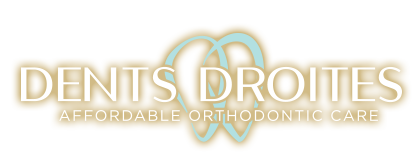Nowadays orthodontic treatment can often be completed in less time and with more options available to the patient. We treat growing children as well as aesthetically conscious adults and since there is often more than one way to treat any given problem, we’re likely to give you several options so that you may understand and choose the treatment that’s ideal for you.
While the field of orthodontics is most often associated with braces to straighten teeth, contemporary orthodontic treatment can do so much more and braces are no longer the only option. Clear aligners can replace braces in a growing number of cases.
What can orthodontics do for me?
Arguably, the greatest benefit of orthodontics is the improvement in the appearance of the smile and face. This being said, as we all know, beauty is very subjective. We often hear of symetry having a strong correlation with beauty . In fact, certain traits and ratios have also found to be universally perceived as more appealing.

These preferred proportions are therefore often the number one goal of orthodontic treatment. And, as you will see, orthodontics has the means to straighten teeth, fix the bite, broaden a smile, improve the facial appearance and in the process lead to greater self image and self-esteem that ca ultimately improve self-confidence!
A- Improve facial profile:
The relationship between the upper and lower teeth reflects the jaws relationship and has a major effect on facial aesthetics. When the lower jaw is more forward than the upper the facial profile will reflect this skeletal relationship and the patient will appear to have a strong chin.

Bringing the upper jaw forward or moving the lower jaw back will create a straighter and often more aesthetically pleasing appearance. On the other hand, when the lower jaw is not quite as developed as the upper jaw the profile will seem more convex and in severe cases the patient may appear to have no chin. Correcting the underlying bite relationship will also result in a straighter, more pleasing profile.
B- Improve lip support:
In an aesthetically pleasing face, the lips are in harmony with the nose and chin. When there is insufficient space for the teeth to align themselves on the jaw bone they will either crowd (become crooked) or flare (swing forward). This flaring of the incisors will push the lips forward.
In certain cases, the lips may be pushed so far forward that the patient may have to strain in order to close them together (called labial incompetence). In this case the treatment plan should aim at pulling the teeth back, the lips will follow resulting in a better harmony between the lips, nose and chin. The result will allow the patient to finally succeed in closing their mouth.

Orthodontic treatment must therefore take into account the desired final position of the lips when deciding upon various possible treatment plans.
C- Improve the smile:
Having straight (nicely aligned)teeth is definitely the first step to having a beautiful smile but it’s not the only one. The following criteria are just as important as aligned teeth in creating a beautiful smile:
1- How much of the front teeth are revealed when smiling:

Ideally, you should see the upper front teeth completely with just a little gum showing above the teeth when you smile. When the teeth have over erupted or when the upper lip is too short, an excessive amount of gum will show. We call this a gummy smile and it can often ruin an otherwise beautiful smile. The opposite (upper front teeth that can hardly be seen when smiling) can be just as distracting
2- An ideal smile arc:

Even when the front teeth are aligned and properly positioned relative to the upper lip, if the upper back teeth have come too far down the result is a cosmetically distracting inverted smile arc. Ideally, the upper teeth should follow the “U” shaped outline created by the lower lip when smiling.
3- A centered midline and levelled occlusal plane:
It has been shown that symmetry is one of the most important factors in regards to beauty. To achieve a symmetrical smile, the upper incisors must be centered with the middle of the face. Also, the teeth on the right side must be of the same length as the teeth on the left side so I’m not as not to create any canting (roll) of what we call the occlusal plane. (Level).

Ideally, the upper arch is centered with the facial midline and the occlusal plane is parallel to the eyes.
4-Correction of other complicating factors:
Surnumerary teeth (extra set of teeth); congenitally missing teeth (teeth that never grew); problems with the size of the teeth such as peg shaped upper lateral incisors ; cross-bite relationships, an edge to edge bite, a narrow palate, airway problems, deficient or excessive facial height as well as bad oral habits such as thumb sucking are all factors that must be considered when establishing a treatment plan that will address the patients concerns without having detrimental effects on the face or dental health.
So as you can see there is quite a bit more to orthodontics then simply aligning the teeth. And since the treatment will require a fair amount of cooperation, time and money it’s best to get it done right the first time. Choosing the treatment that’s right for you is not only a question of finding a competent practitioner but making sure that he/she takes the time to explain your treatment options and the pros and cons of each of these plans.



